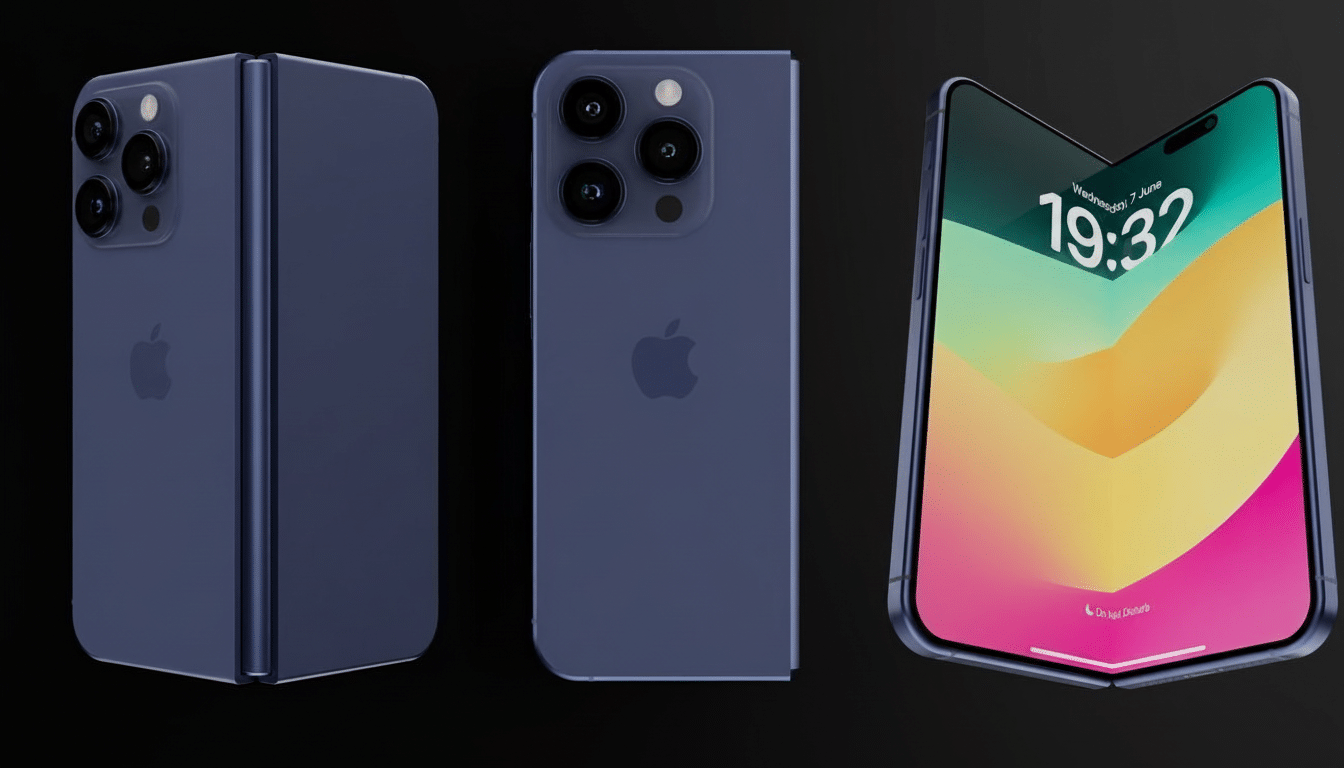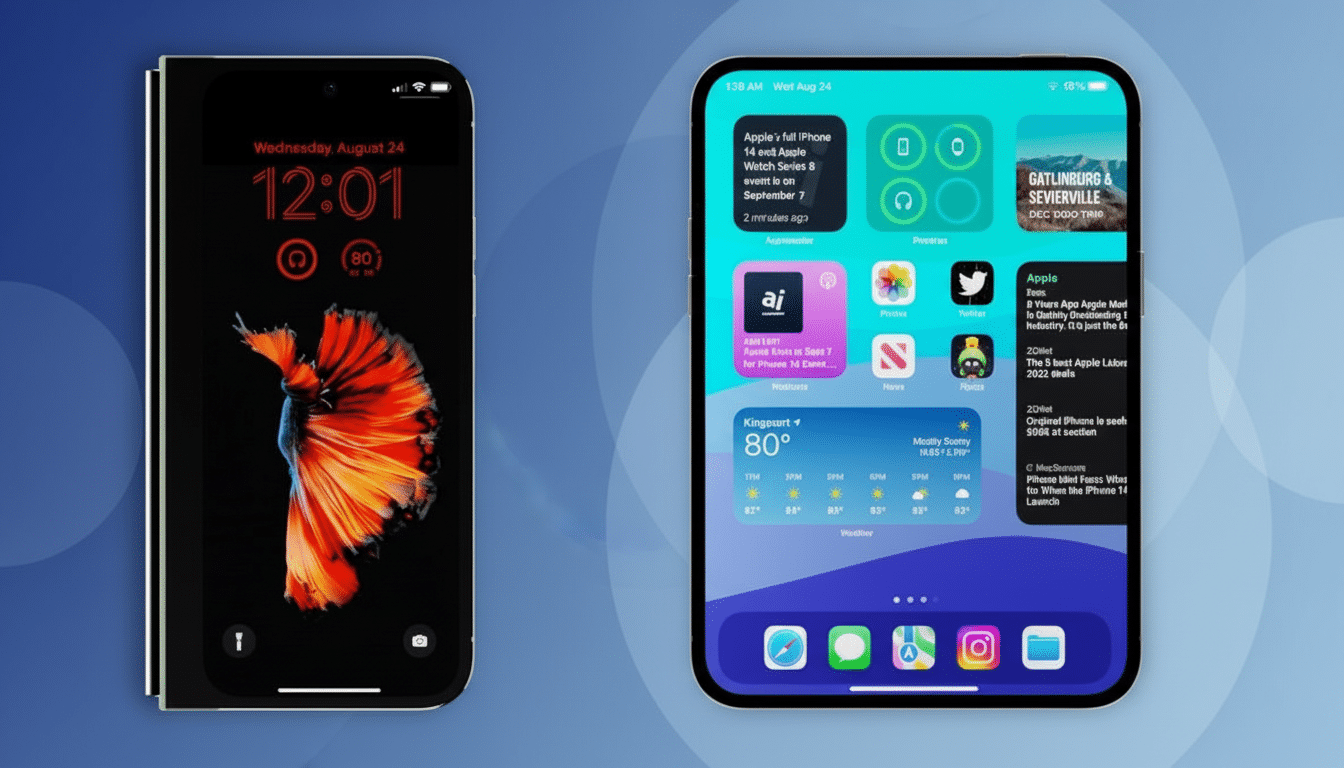Apple’s long-rumored first foldable iPhone could come with a price tag that even market veterans may not have quite seen before. A fresh report from Taiwan’s Fubon Securities, via Investing.com, suggests a potential starting cost of around $2,399 — topping even the most expensive of today’s mainstream Android foldables.
A Price Tag That Rewrites The Foldable Playbook
If the projection becomes reality, Apple would immediately establish a ceiling for consumer foldables. For context, Samsung’s Galaxy Z Fold family typically opens at around $1,799 to $1,899 (US) depending on generation and storage, Google’s debut Pixel Fold launched with a price of $1,799, and the OnePlus Open undercut rivals at a $1,699 starting price. A few ultra-premium models in China, like Huawei’s Mate X5, can exceed $2,000 after conversion, but a global price tag of $2,399 would put the phone in a new orbit for mass-market foldables.

It is not just a question of “how much,” but also, “why now.” Foldables have evolved from prototypes — global shipments exceeded 15 million units last year, according to Counterpoint Research — but they remain a premium niche product. Apple coming in at the tippity top indicates a similar sort of approach, showing off with overbuilt hardware and (while it can) protecting margins, then peeling back costs as manufacturing yields get better.
Why the hinge can push up the cost of a foldable iPhone
According to Fubon’s note, a big chunk of the price is accounted for by its hinge — the most problematic and labor-intensive element in any foldable device. Apple also plans to use an amorphous alloy or metallic glass in hinge design. That alloy is roughly 2.5 times stronger and harder than titanium, the metal used on the latest iPhone Pro chassis. Apple has a background with amorphous alloys thanks to its Liquidmetal-related intellectual property, so it would be logical for the company to use that knowledge in building out a foldable hinge.
Durability mandates spiral costs quickly. Depend on it: a hinge needs to survive the stress of such asymmetrical, hundreds of thousands, even millions of times opening and closing with alignment within tolerances thinner than a hair. It needs to spread the force away from the UTG, keep particulates out, and it is not allowed to add play, click, or wobble over time. Each of those constraints requires looser machining, exotic materials, and more careful quality control — all expensive.
There’s also the crease. It needs to be hidden within custom display stacks with multi-layer laminates cored for a downward-folding display and backed by flex-happy backplates. Display Supply Chain Consultants has previously called out UTG processing, panel yields, and the cover materials for being among the main culprits when it comes to foldable bill of materials. If Apple is going after a more elusive crease and superior fold count rating than its rivals, the parts and process costs should match that ambition.
How it compares to today’s premium Android foldables
On raw price, Apple’s rumored entry would pace the current Android field. The gap isn’t insignificant: $500 to $700 more than many book-style foldables at launch. Even if the base is generous, that delta is big enough to sway buyer psychology. OnePlus proved there’s an appetite for value-driven foldables with its $1,699 Open — while Samsung has incrementally been pushing Z Fold pricing lower with promotions and aggressive trade-in offers.

The counterweight Apple has is perceived longevity and ecosystem glue. iPhones tend to get five or more years of iOS updates, and the company has a strong service network, resale values, and an accessory ecosystem. Should the hinge feel notably more solid, the crease becomes less apparent, and the software gets a final polish for split-screen glory and app continuity, some early buyers might rationalize that premium as an investment rather than a tech experiment.
Will Apple climbing the ladder get buyers to climb with them?
Prices for smartphones have regularly climbed higher in recent years. IDC and other trackers show premium tiers gaining share as consumers hold onto devices for longer and spend more when they eventually do upgrade. Apple also has special advantages because of its discounts for trade-ins, carrier subsidies, and 0% financing that offset sticker shock. A $2,399 iPhone Fold feels less egregious when the pay structure feels like a high-end plan instead of a radical splurge.
The threat is that it will limit the audience to early adopters and enterprise buyers, submitting the larger-volume market to cheaper foldables. But Apple has played the long game before, from the original iPhone to Apple Watch Ultra, entering high and broadening out later. If the company pitches this model as an ultra-premium flagship for creators and power users, then even modest volumes would hit targets while establishing a high level for durability and design.
What The Timeline And Supply Chain Indicate
Supply chain chatter indicates that a launch window is at least several months away, which would allow the technology, from a materials and manufacturing point of view, to mature. Supply of panels would probably come from Samsung Display, and possibly LG Display, both of which have bet big on foldable OLED. Yield gains in the next cycle could erode costs, but no clear early signal has emerged on price-cut plans.
If Apple does deliver a foldable iPhone at $2,399 or so, the move will reset expectations on what one of these top-tier folding phones should cost — and what buyers should get in return. The market has discovered that hinges and lines are no cosmetic detail — rather, they define the experience. Those are features Apple seems prepared to make the headline attractions, even if it requires writing a larger check to get there.

